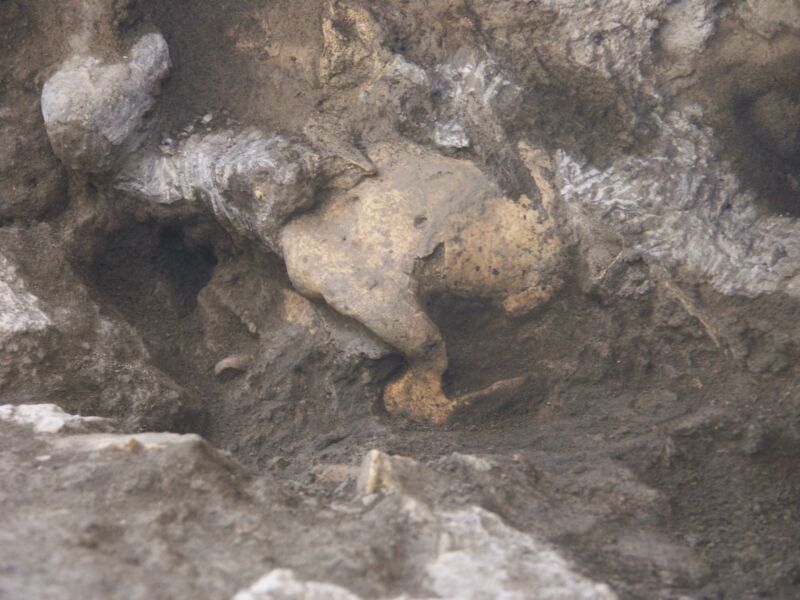
Enlarge / One of the remarkably intact Dmanisi skulls at the time of its discovery. (credit: Guy Bar-Oz)
We have an extensive collection of fossils from the lineages that produced us humans. A large number of Australopithecus and early Homo skeletons track the transition to bipedal walking and the appearance of features that mark our present anatomy. But it’s much harder to figure out what led to the mental capabilities—complex language, the near-constant use of tools, and so on—that help set humans apart.
Much harder—but not entirely impossible. Remains of skulls can help us figure out the likely cranial capacity of extinct species. And the brain actually leaves its mark on the interior of skulls, allowing some aspects of the brain’s anatomy to be pieced together. Now, an international team has done this sort of analysis on a set of Homo erectus from a critical point in our species’ past. They have found that some earlier brain species persisted well into the history of our genus Homo, but that didn’t stop those ancestors from migrating out of Africa.
Reconstructing brains
How do you figure out what a brain once looked like? You need a reasonably intact skull, which is relatively rare, given the fragility of the bones. Once the skull is reconstructed, it’s possible to make what’s called an “endocast” of the interior of the skull, capturing the details of its features, including where it conformed to the underlying brain. In some cases, endocasts form naturally during the deposition of material around a fossil. They could also be made after discovery and now can be done virtually thanks to our ability to scan and reconstruct 3D volumes.





